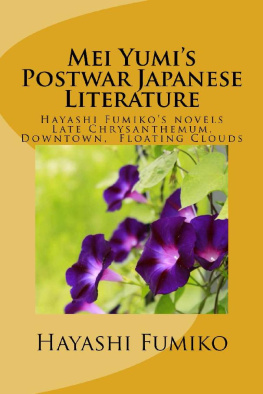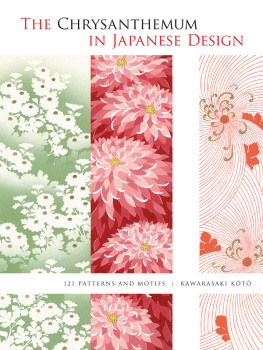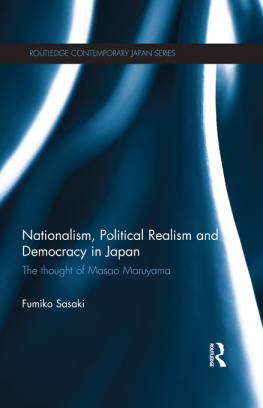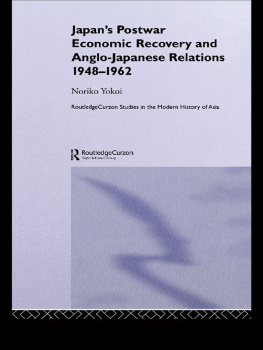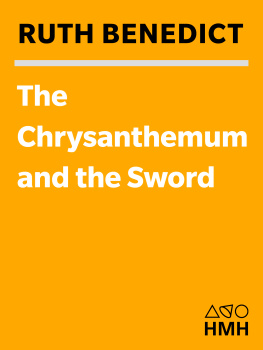Hayashi Fumiko
Mei Yumis Postwar Japanese Literature
Late Chrysanthemum
Downtown
Floating Clouds
Hjosui Publishing
Mei Yumis Postwar Japanese Literature
Novel
Author of originalnovels: Hayashi Fumiko
Translation andwriting: Mei Yumi
Publisher: Hjosui Publishing Japan
Printing: CreateSpace
Coverphotograph: K da Rui
Calligraphy: Saiko Nakajima
Cover design: Studio Modern Aotsu
Editing service: Fredlyn Chung
Copyright Mei Yumi& Hjosui Publishing 2015
All rights reserved.
ISBN-13:978-1517080990
ISBN-10:1517080991
MeiYumis Postwar Japanese Literature
Mei Yumi &Hjosui Publishing 2015
ISBN-13:978-1517080990
ISBN-10:1517080991
Late Chrysanthemum Bangiku November 1948
Downtown Shitamachi April 1949
Floating Clouds Ukigumo November 1949
Postscript
Appendix, UnitKitagishi
Translators Notes
LATE CHRYSANTHEMUM

Hayashi Fumiko, Bangiku, November1948
Mei Yumis Postwar Japanese Literature
Late Chrysanthemum
Characters
Kurahashi Kin --- Aizawa Kin, an ex-geisha, 56 years of age.
Tabe --- Kins ex-partner.
Kinu --- Kinu (OKinu), a housemaid in the house of Kin.
AizawaHisajir --- Kins father-in-law.
AizawaLitsu --- Kins mother-in-law, a good financier.
Machiko --- A beauty ofreputation, a daughter of a tabiproduction store, Tatsui.
Torikoshi --- A gambling dealer of stock markets, the gbyaku .
Sumiko --- Kins sister-in-law.
Itaya Kiyoji --- Kins ex-partner. Ano more than 40-year-old horticulturist, living in Matudo, Chiba Prefecture.
Yamazaki --- Kins acquaintance, who died after thestomach surgery.
Michel --- A French man and Kins customer
Late Chrysanthemum
I will come see you, around fiveoclock in the evening.
Kin [*94] got a sudden phone call, and replied, thinking another way in mind; Thats it,one year has passed, before I knew.
She put the phone down and looked upat a wall clock. She still had two hours before five oclock. First of all, Ihave to take a bath. Kin ordered herhousemaid to prepare supper earlier than usual, and went out to the public bathhouse.
I must look younger than the timewe separated. It would be my defeat if he scented oldness in me.
Kin took time in the hot water leisurely. Soon after she gotback home, she took ice out from the ice box, crushed the ice, and wrappedpieces of it in gauze, folded in two, with which she massaged her face evenlyin front of a mirror, for more than 10 minutes. Finally, her face becamereddish and so numb that her skin was senseless. Her age was 56 years, whichbore the fangs and growled at her. I have longtime experiences, so I can glossover a womans age in any way that I like. Kin,with a stern look, wiped her cold face with an imported face cream which shepraised.
In the mirror, the pale and old faceof a woman, like the dead, stared wide-eyed at her. During making up, shebecame disgusted with her own face. Her own beautiful images printed in picturepostcards, however, flashed back inside her mind. She rolled up her clothes onher knees, and stared at her thigh skin. The thigh did not plump up softlyanymore as before, but c apillariesof thin veins appeared on the thigh skin. She felt relieved only that herthighs had not become thin. She closed both thighs, which fit together well.
In the bathroom, Kin, sitting properly on her knees,always poured hot water on her thighs, between which water stayed withoutflowing down. The slight relief was a comfort to Kins oldness, I can still entertain a man. Only her anticipationlike this was her last resort in her life. Kinopened her thighs, and lightly caressed the skin of her inner thigh, as ifother peoples skin, which were soft, like smooth fawn skin anointed with oils.
Kin remembered The Talesof Ise to thoroughly know Japan, Shokokuwomishiruha Ise Monogatari,which was Saikakus [*157] palody of The Tales of Ise [*191] ,originally written during the Heianperiod from 794 through 1192. In the section of Ise Sightseeing, a coin-throwing game was described. Two beautifulshamisen players, before playingtheir shamisen, stretched a scarletnet around them, and asked onlookers to throw coins aiming at their faces whilethey played the shamisen. Kin could not help thinking that such a Nishikie [*134] -like beautiful scene of the spread scarlet net had already been the pastfor Kin, now.
During her younger days, money greedoverwhelmed her as if piercing to flesh and bones. Getting older, besides,after passing through the fierce waves under the war, Kin felt her life empty and uncertain, if not a man. Due to gradualchanges in beauty by ages, the dignity of beauty had transformed differently inevery phase of her life.
Kin did not wear anything flashy or ostentatious, as if incompetition with her own age, which seemed folly to her. Kin disliked such a ridiculous trickery that a sensible woman overthe age of 50 would wear a necklace down to her meager bosom, and wear a skirtof red striped pattern, just right for underwear, yumoji [*225] , with a white satin baggy blouse, hiding her wrinkled forehead under awide brim hat. Besides, she did not have indecent taste for garments, like thewhores, jor s,favorite, to show the scarlet color from the back of the neckband of the kimono.
Kin had never worn western style clothes up to this period.She liked the neckband of pure white chirimen [*19] , the lined kimono made of shima -brand indigo-blue textile fabrics with splashed pattern. Her favorite obi [*139] sash was the Hakataobi of light cream in color with a whitelateral stripe pattern. She never would show her light blue obiage [*140] at the breast part of the kimono. Whenit came to western clothing, by herself, shedevised dressing in the style of a western woman. She formed the bulky breastand a slender waist by wrapping a datemaki [*26] belt around her belly as tightly as possible, and then put a waist padlined with floss-silk wadding on the upper part of her bottom. Her hair wasoriginally brown, giving a younger impression to her white face of over 50years of age. She was tall, and wore the kimonoupward to a higher position, so that the hem of kimono showed a clear-cut outlines around her feet. When she was tomeet a man, she, without fail, prepared herself to be like a professional womanwho was sedate in demeanor. Then, she drank, in one gulp, half a cup, choko, approx. 0.09 of cold sake [*159] . Thereafter, she brushed her teeth to mask the smell of sake cautiously.Only a bit of sake had a bettereffect upon Kins body than using anycosmetics. When she slightly felt tipsy, sides of her eyes turned red as ifdyed, and her large eyes appeared wet. She made up her face in shades of bluewith cosmetics, and applied to her face the cream solved with glycerin. Herfacial complexion became clear as if revived. Lips only were colored in darkred with high quality lipstick. The red was seen only on her lips. Kin had never colored her fingernails sofar in her life. The fingernail coloring for hands of the aged seemed absurd,and shabby as if begging for something. She patted lotion only on the back ofthe hands. She cut her fingernails nervously very short, and polished with awoolen cloth.
Next page
